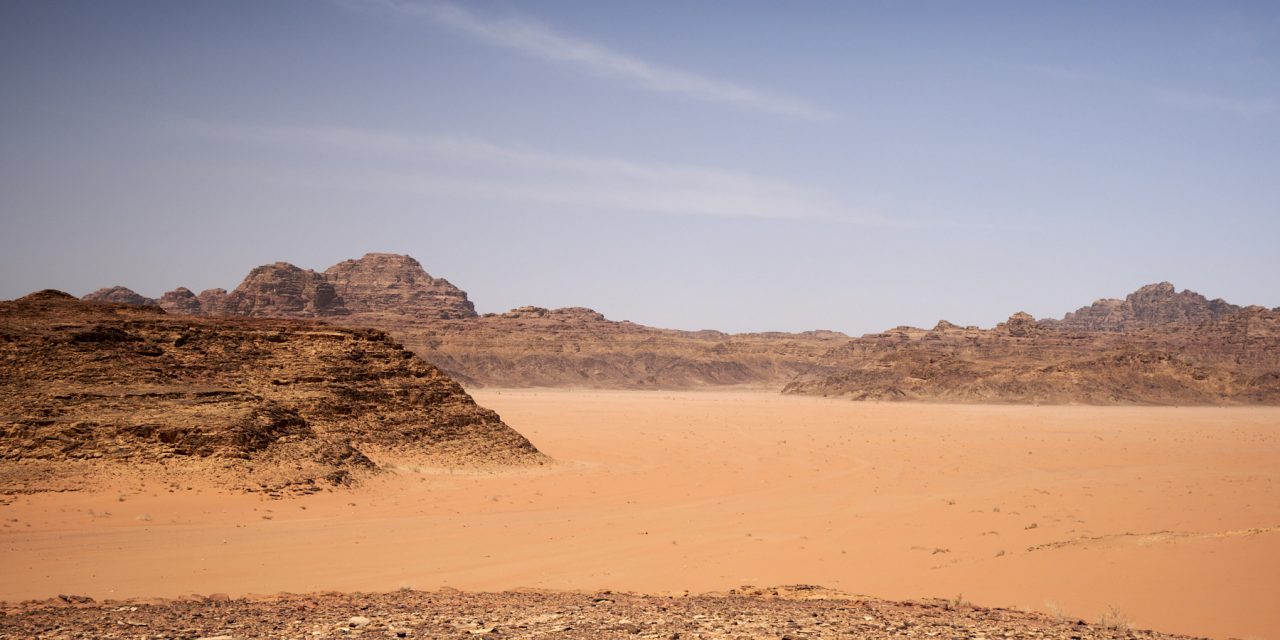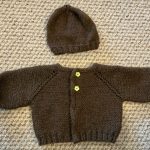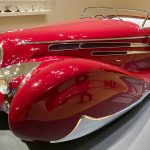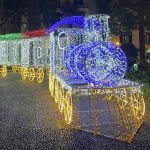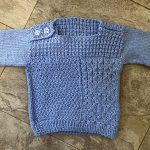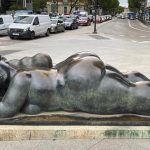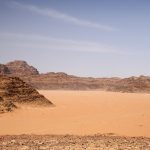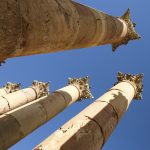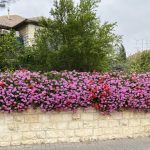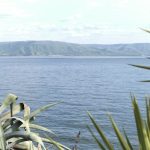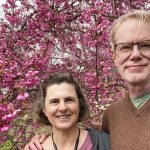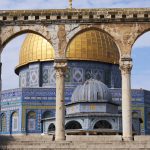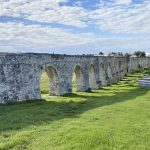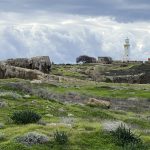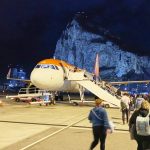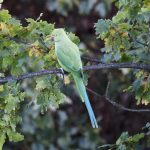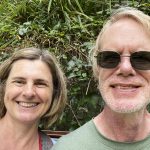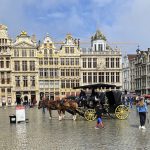After the morning on Mount Nebo, we continued on our Jordan tour. We arrived at Petra in the early afternoon, ready to follow the trail down the crevasses. Read about “the discovery of Petra the ‘lost’ city re-emerged on 22 August 1812″ here in an interesting article. Petra is considered to be the 7th Wonder of the World. The trail down to Petra is about 3/4 mile long, winding through the rugged hills. The trail is lined on both sides with carved channels to carry water down to Petra.
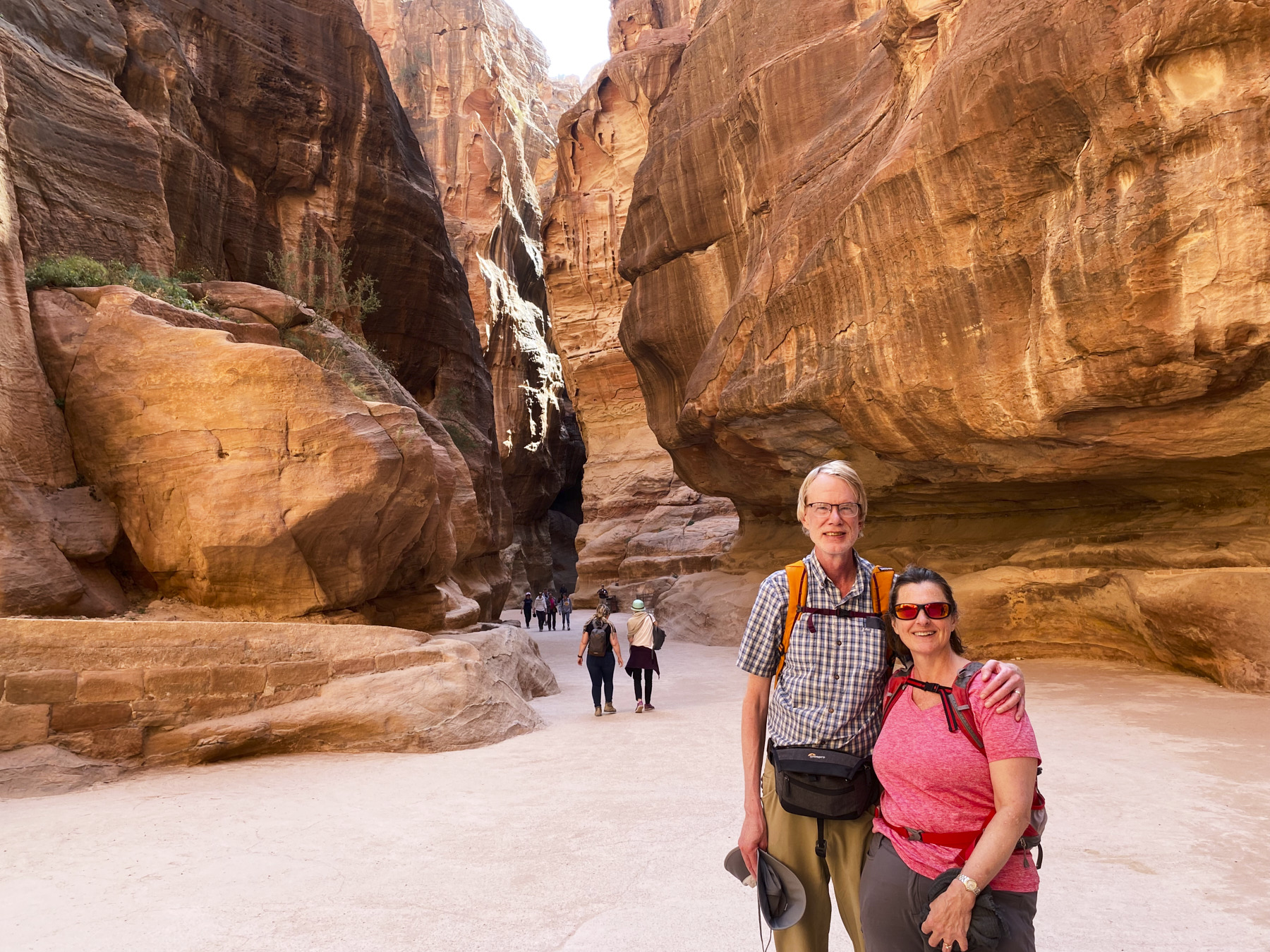
The photo below shows the water channels carved into the base of the cliffs more clearly. The Nabataeans that settled this area created numerous reservoirs to contain and manage rainwater for the city. Although this area has been inhabited for roughly 9,000 years, the city gained prominence in the couple hundred years BC to around 100 AD. It’s population peaked at around 20,000 as it enjoyed the wealth coming from overland trade routes. Later, it became part of the Roman empire, and lost it’s prominence as sea trading routes became more popular.
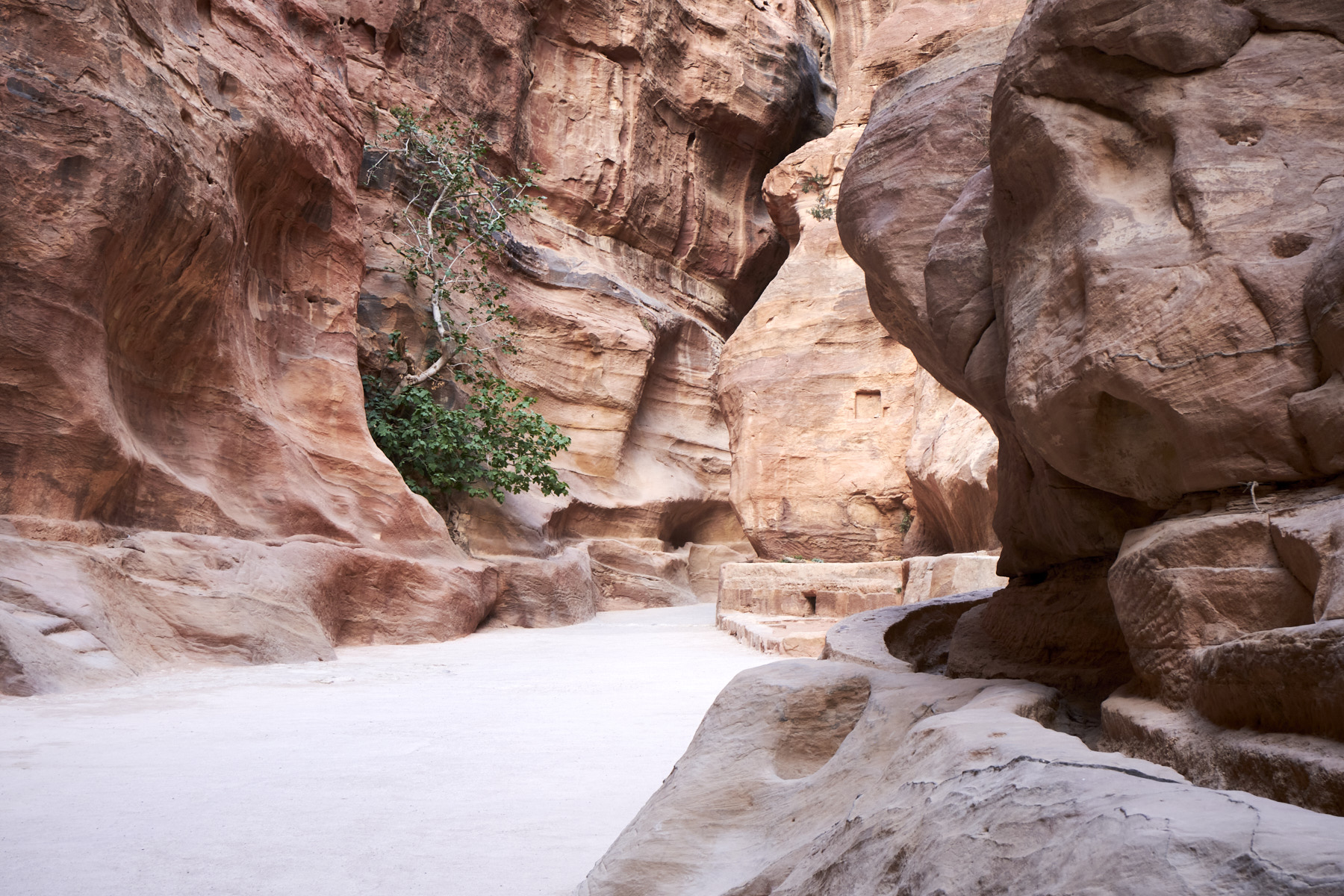
Along the path down to Petra, there are numerous mausoleums carved into the sandstone.
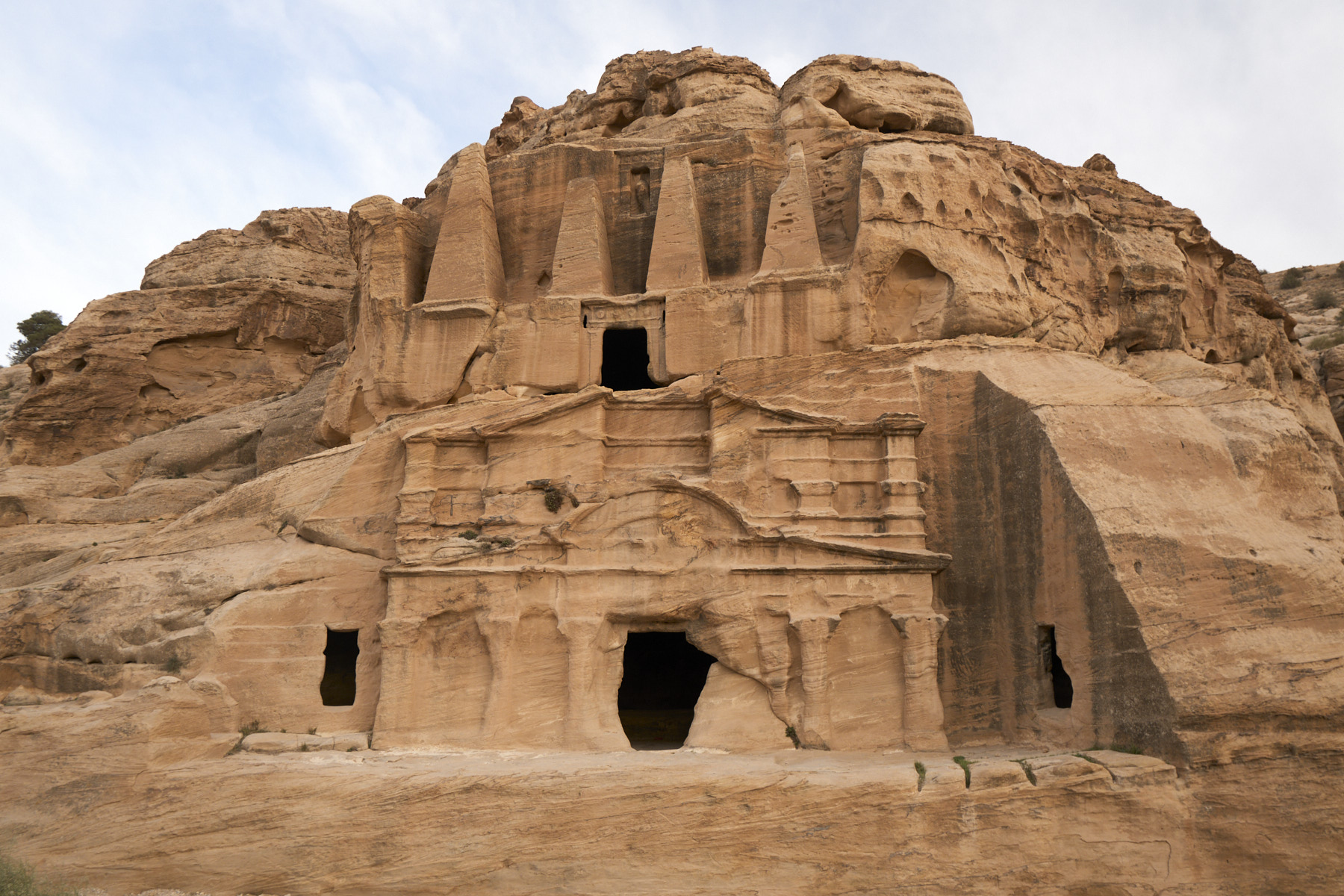
But it’s the final bend in the path that leads to the dramatic views of the Treasury. It was named because later Bedouins believed that this mausoleum (Nabatean King Aretas IV, 1st century AD) held secret treasure hiding somewhere inside.
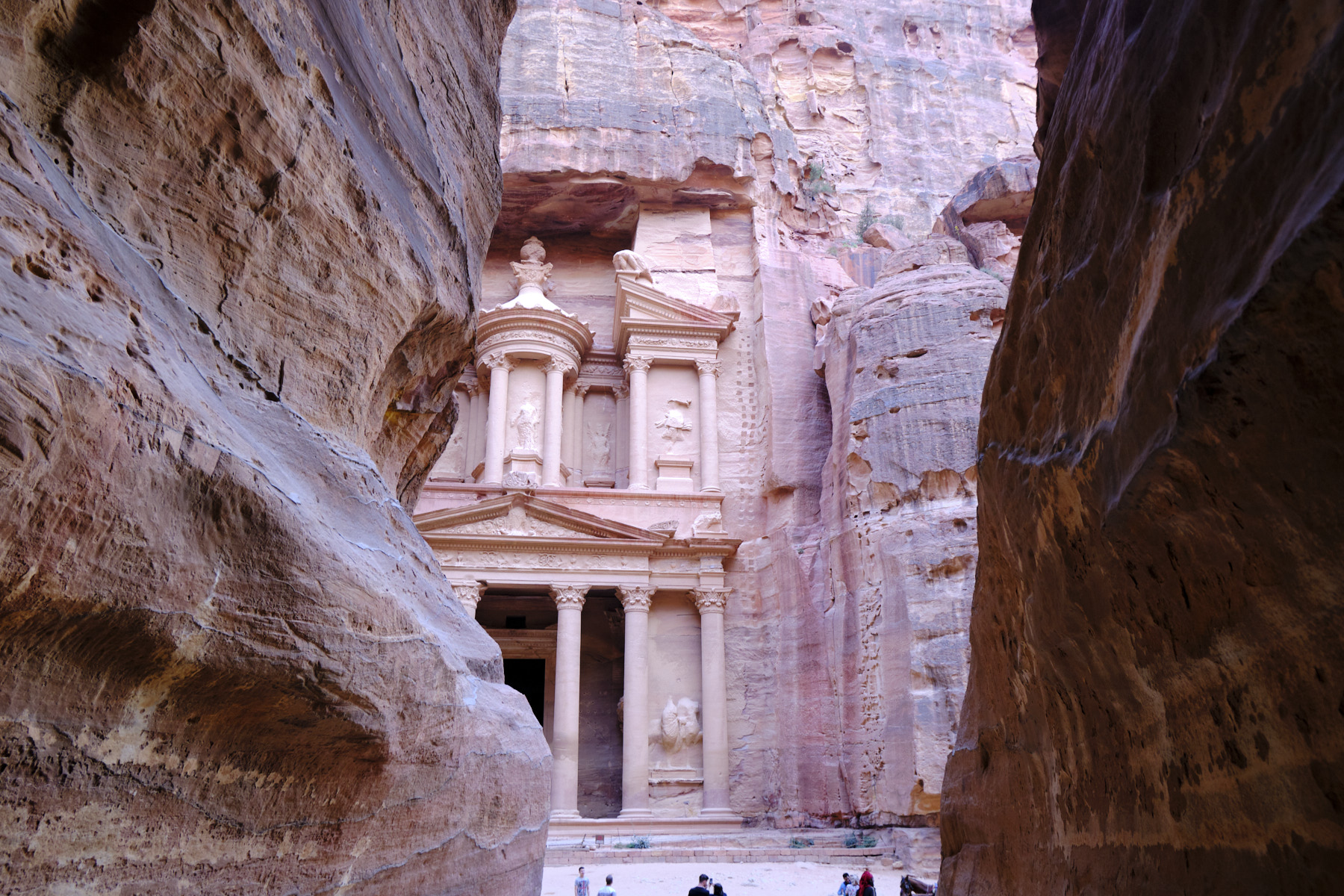
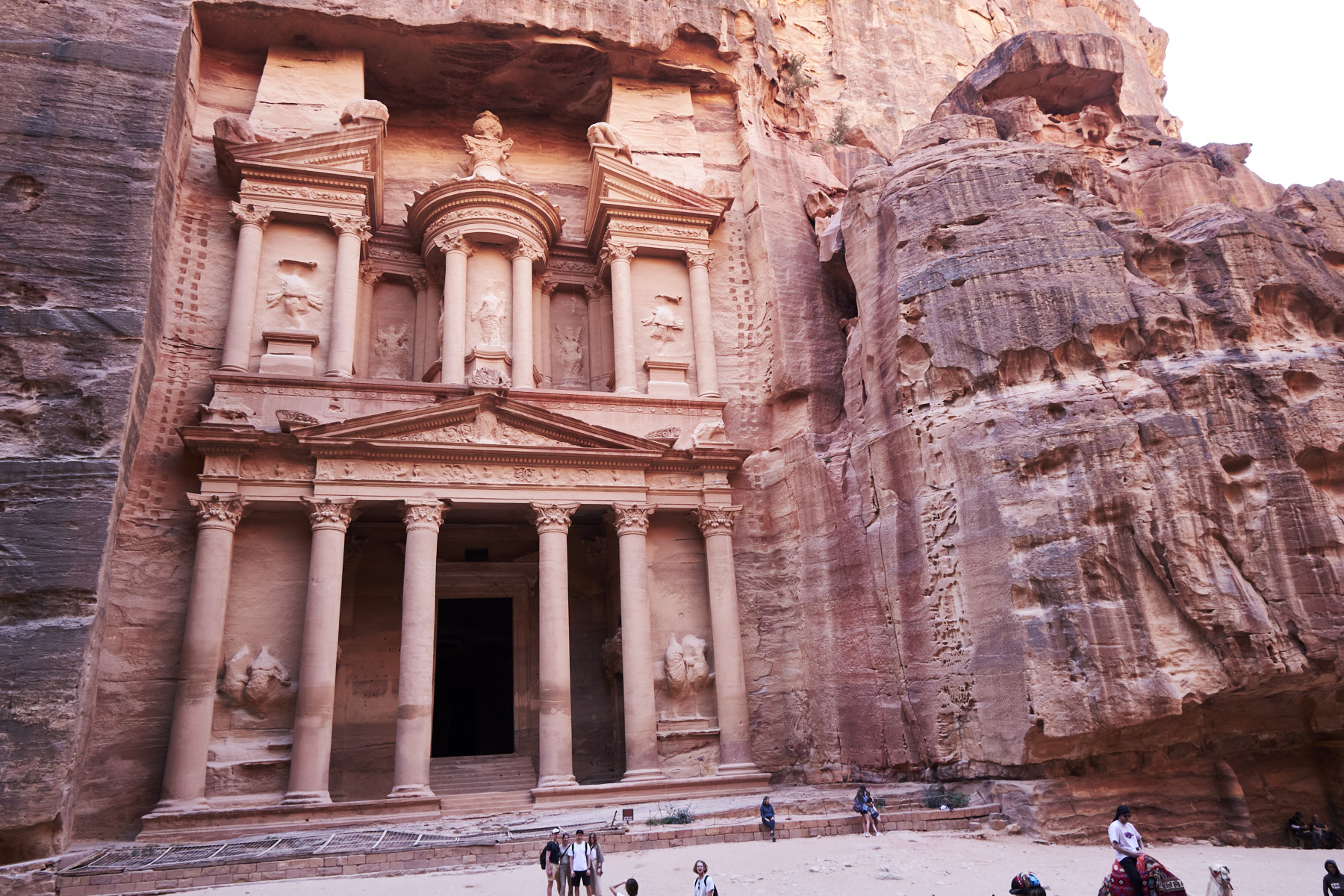
Continuing further, there is a theater that can hold over 8,000. It was used for poetry readings and dramas, and was believed to be used for gladiator fights as well.
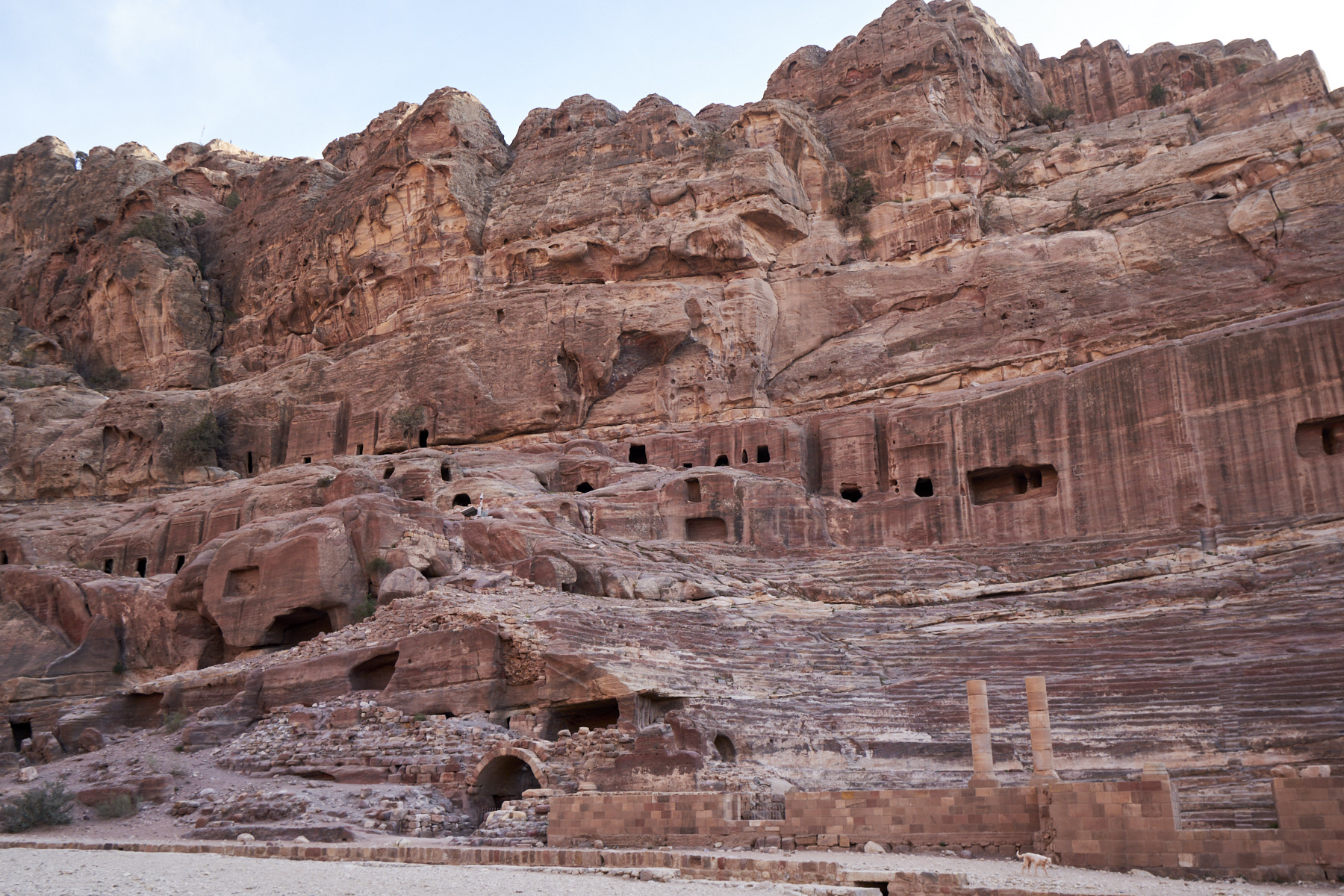
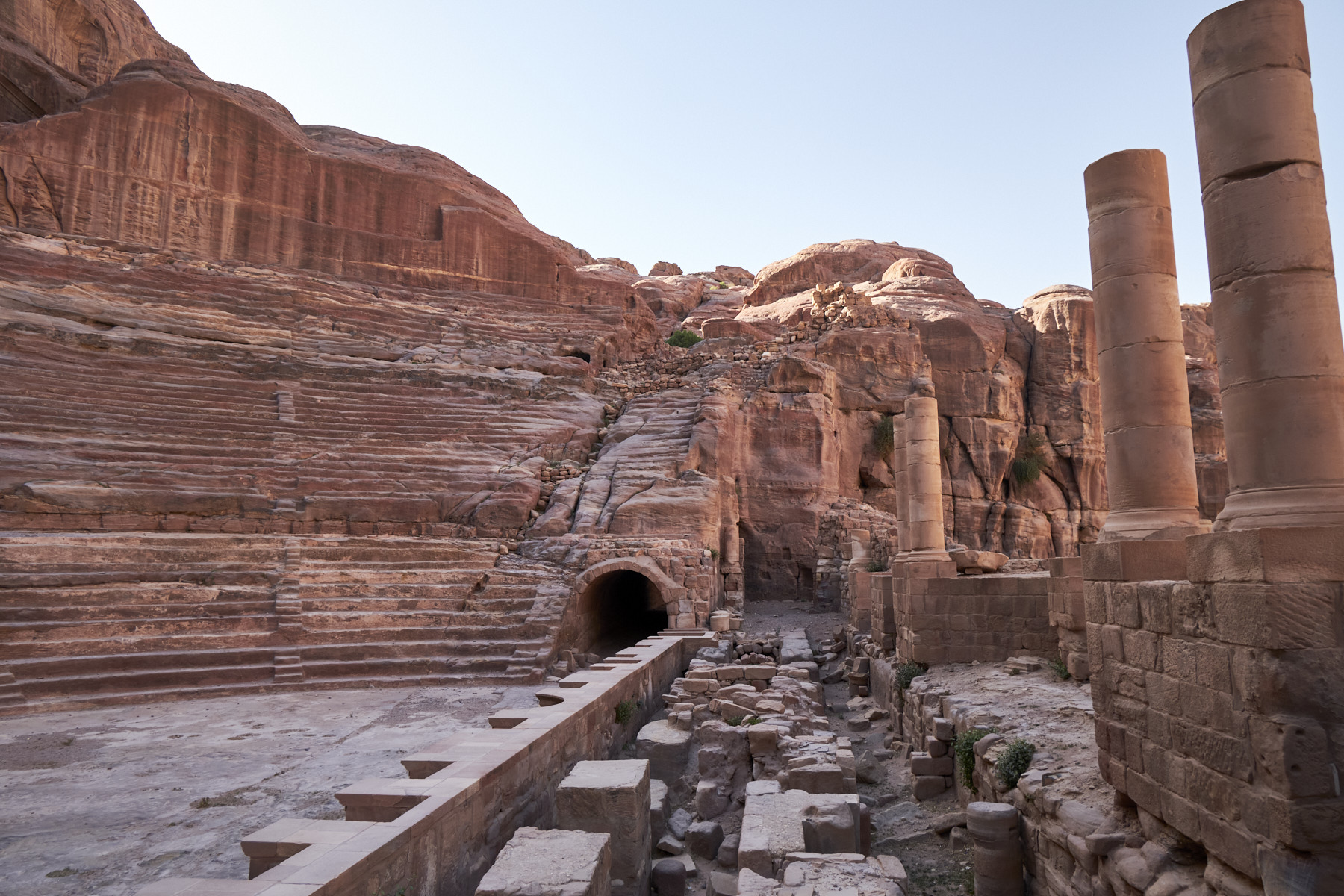
There are many mausoleums carved into the walls, some in very good condition, some have become quite weathered over time.
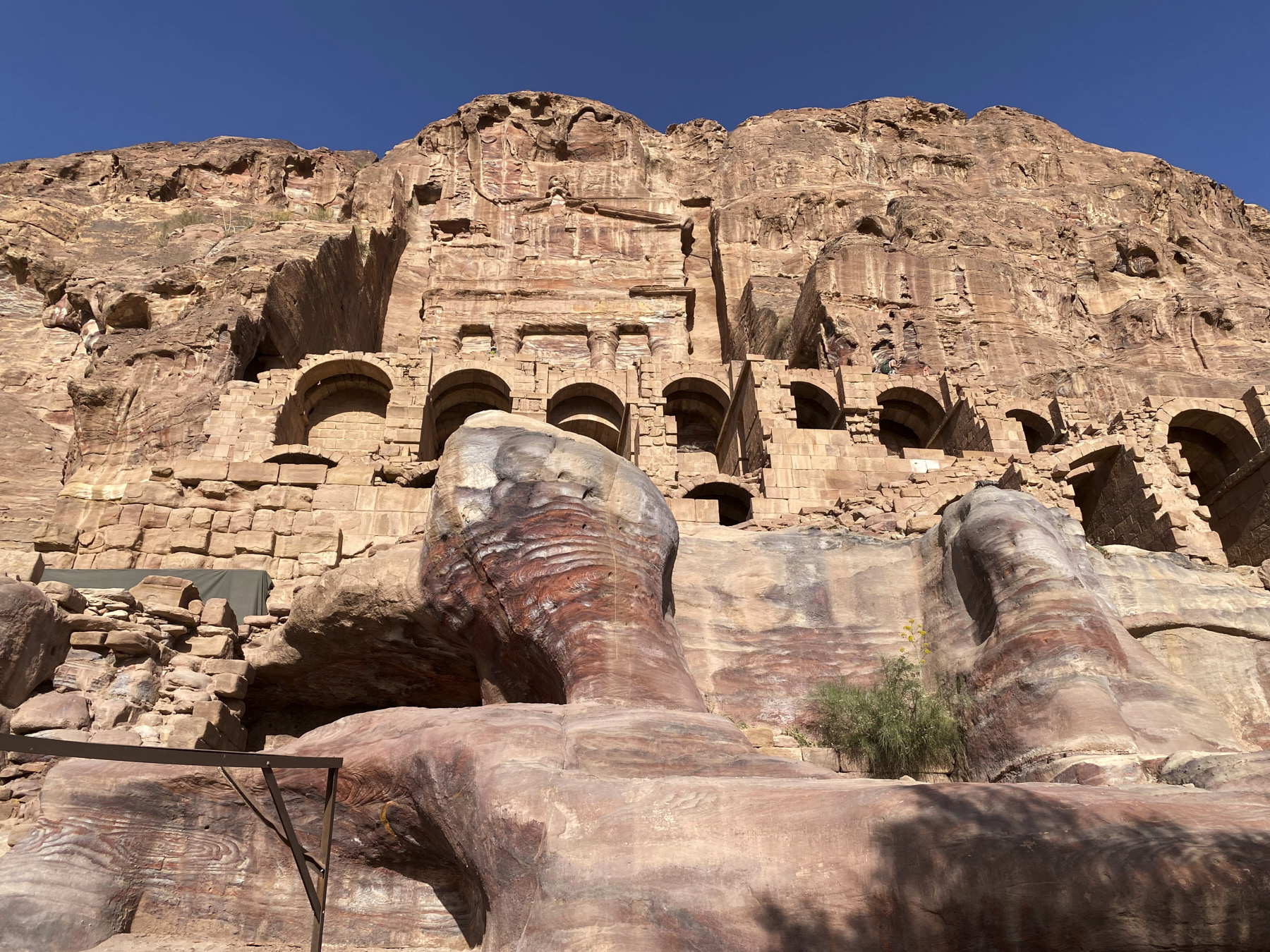
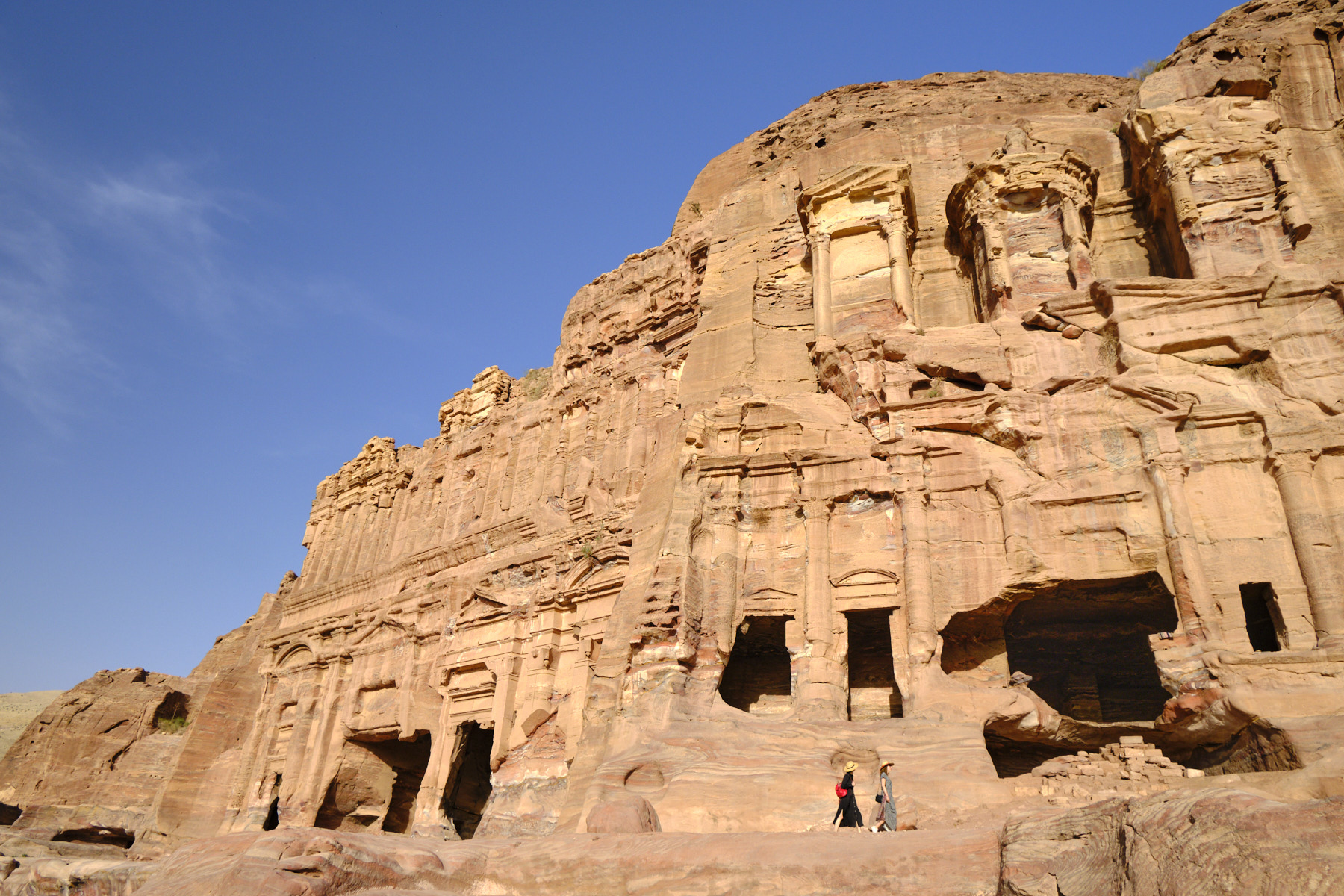
View of the inside of one of the mausoleums showing the beauty of the natural sandstone, followed by a picture looking out.
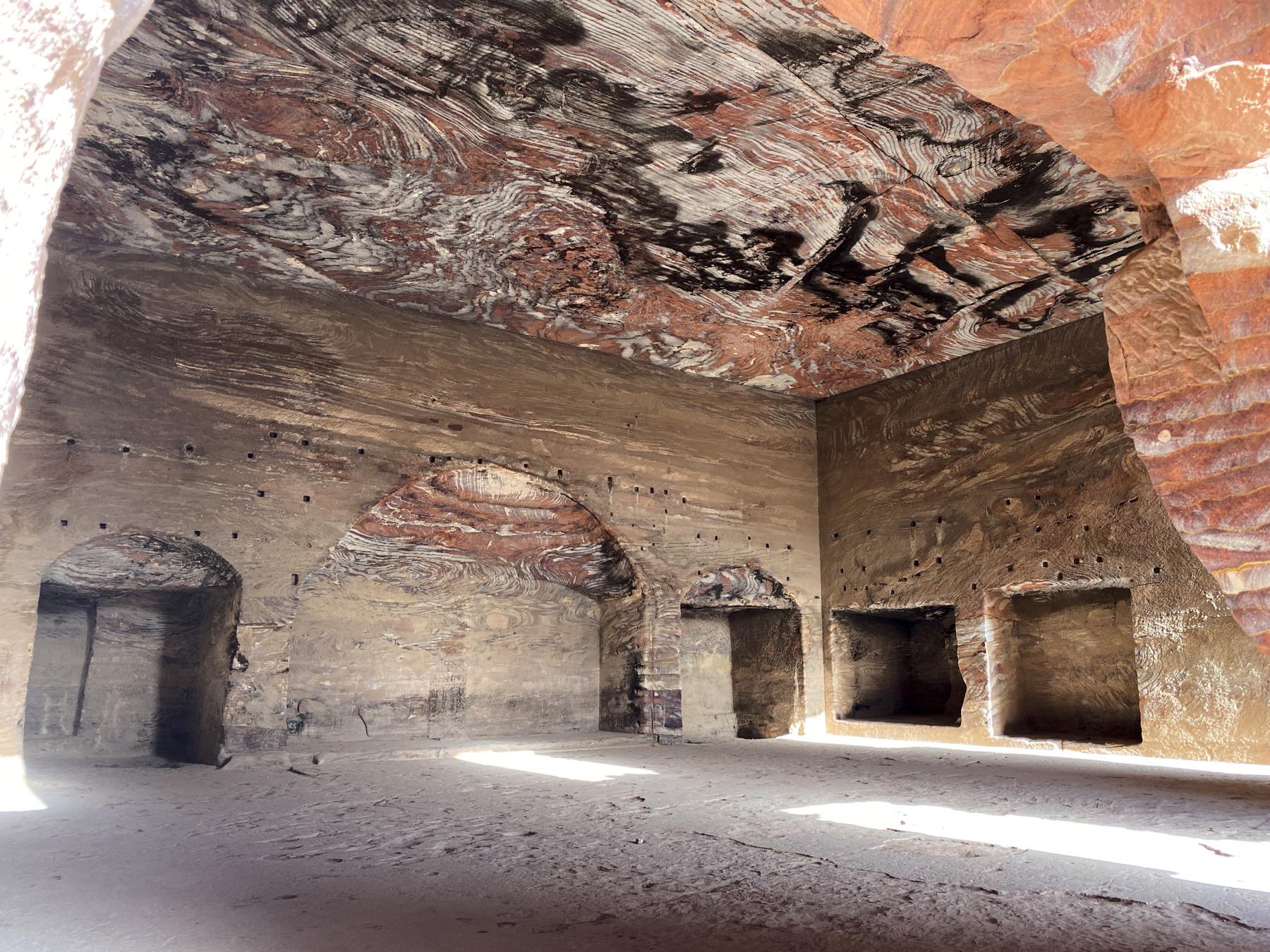
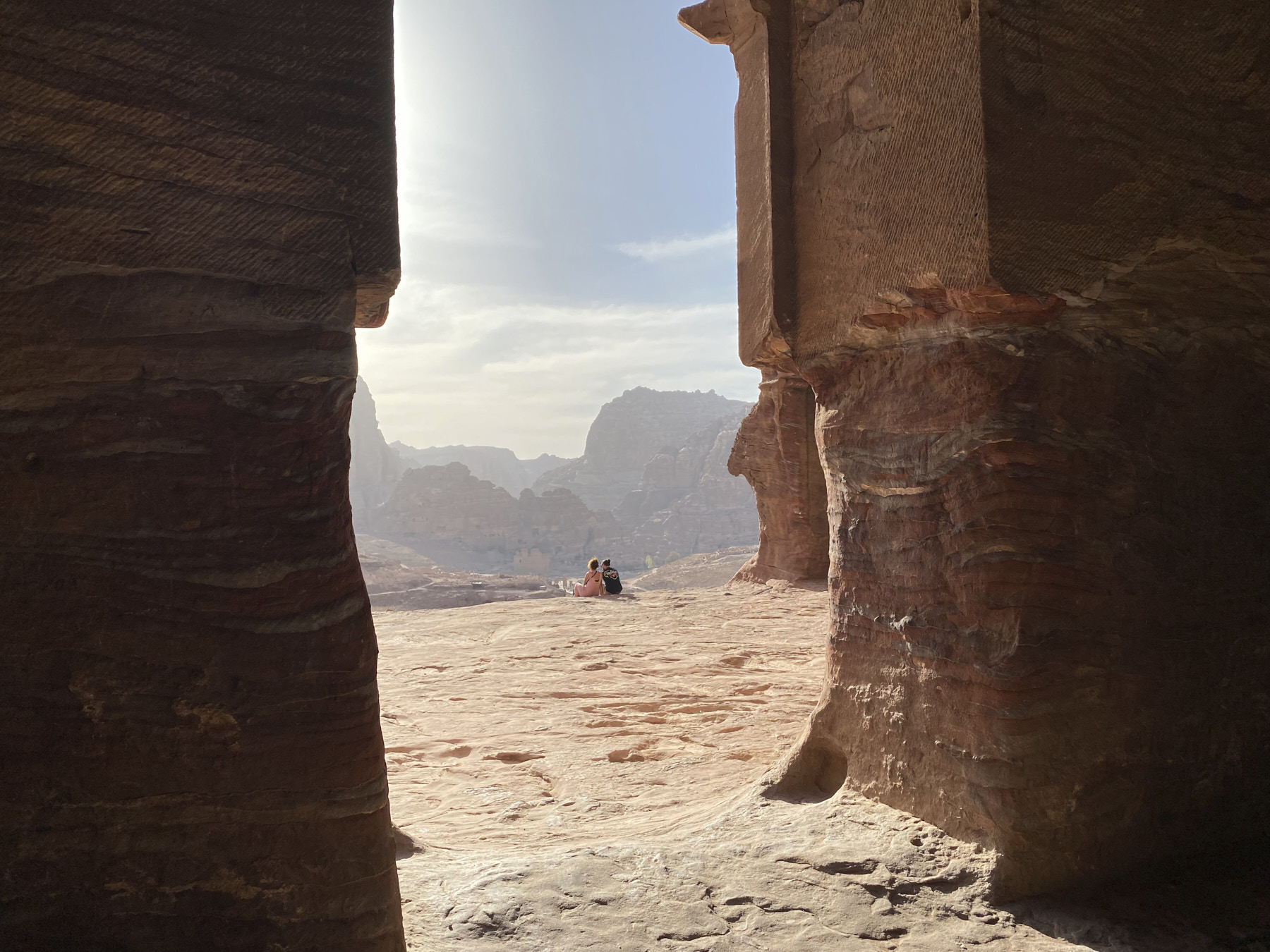
Hiking along the upper cliff areas gave wonderful views of the hills and valleys.
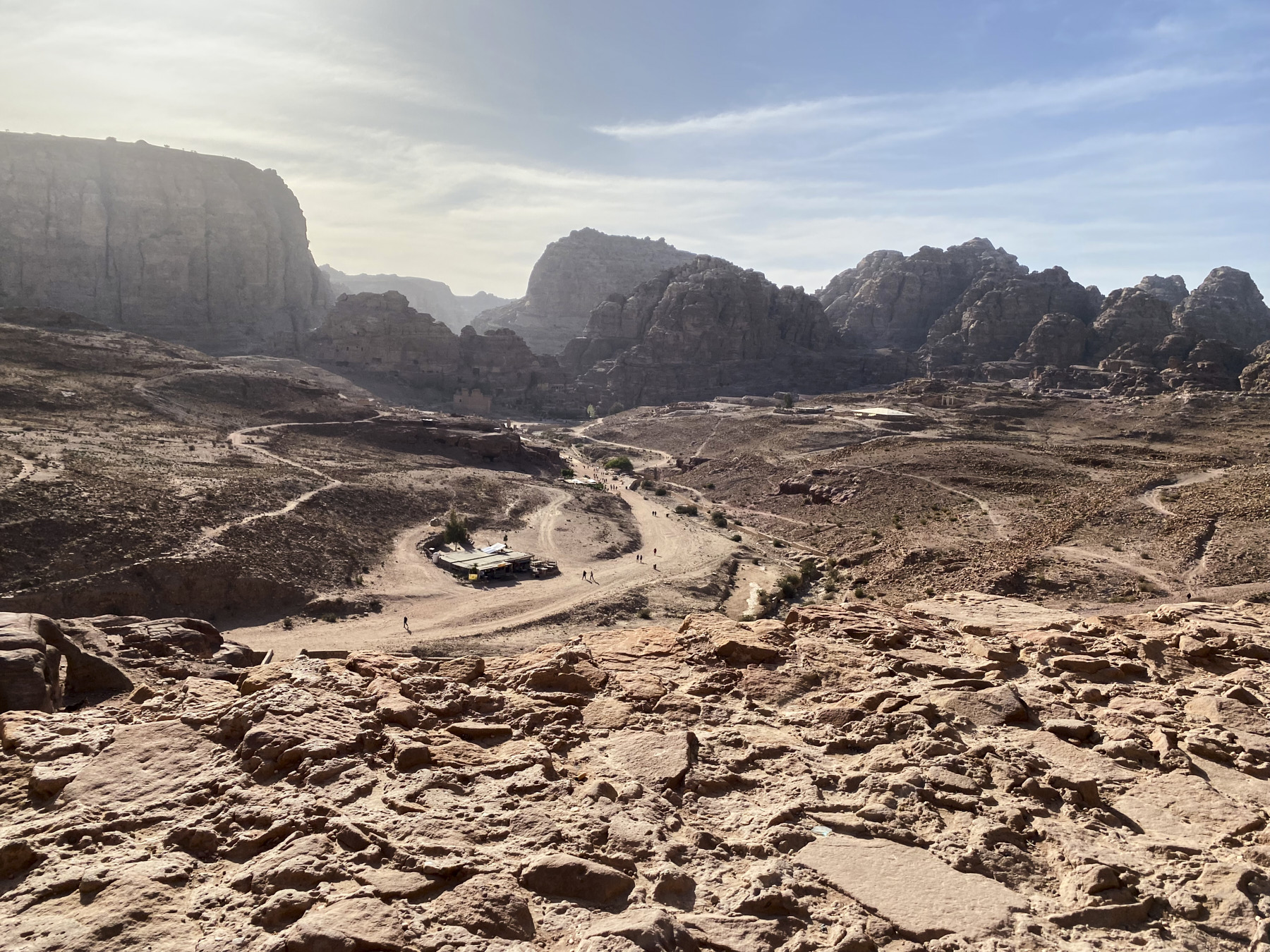
The smaller openings along the lower half of the cliffs are houses.
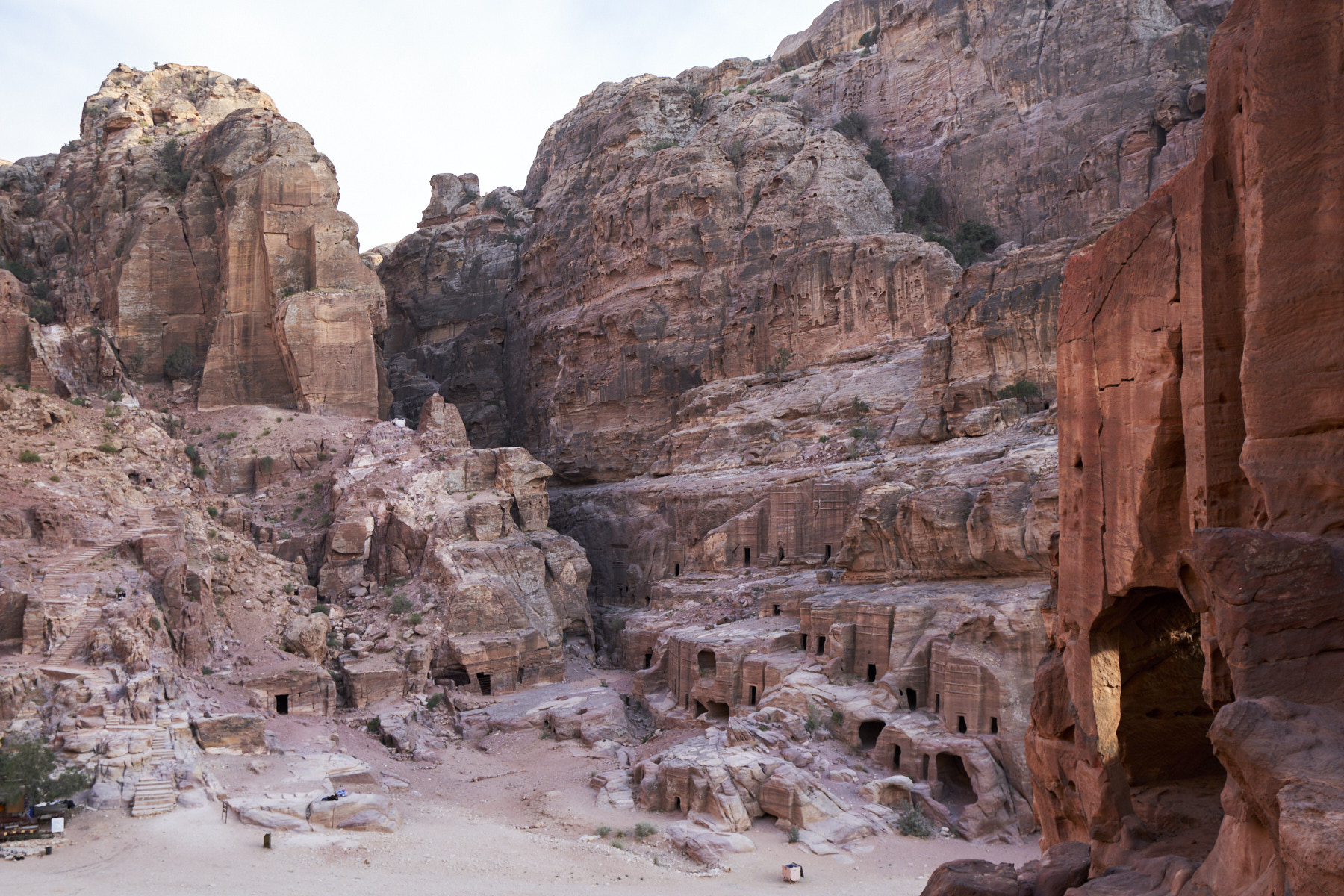
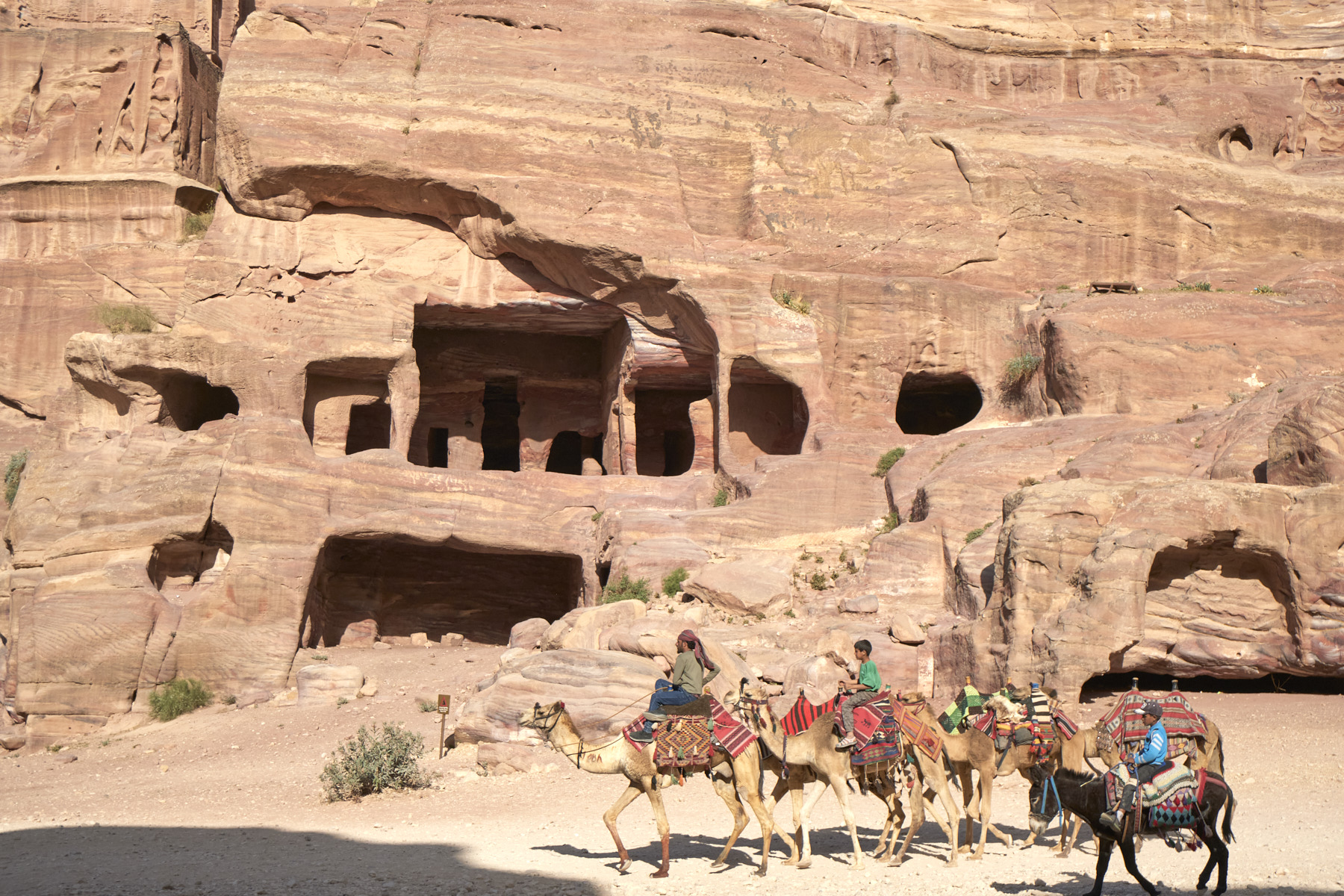
A flowering bush in the city of Petra
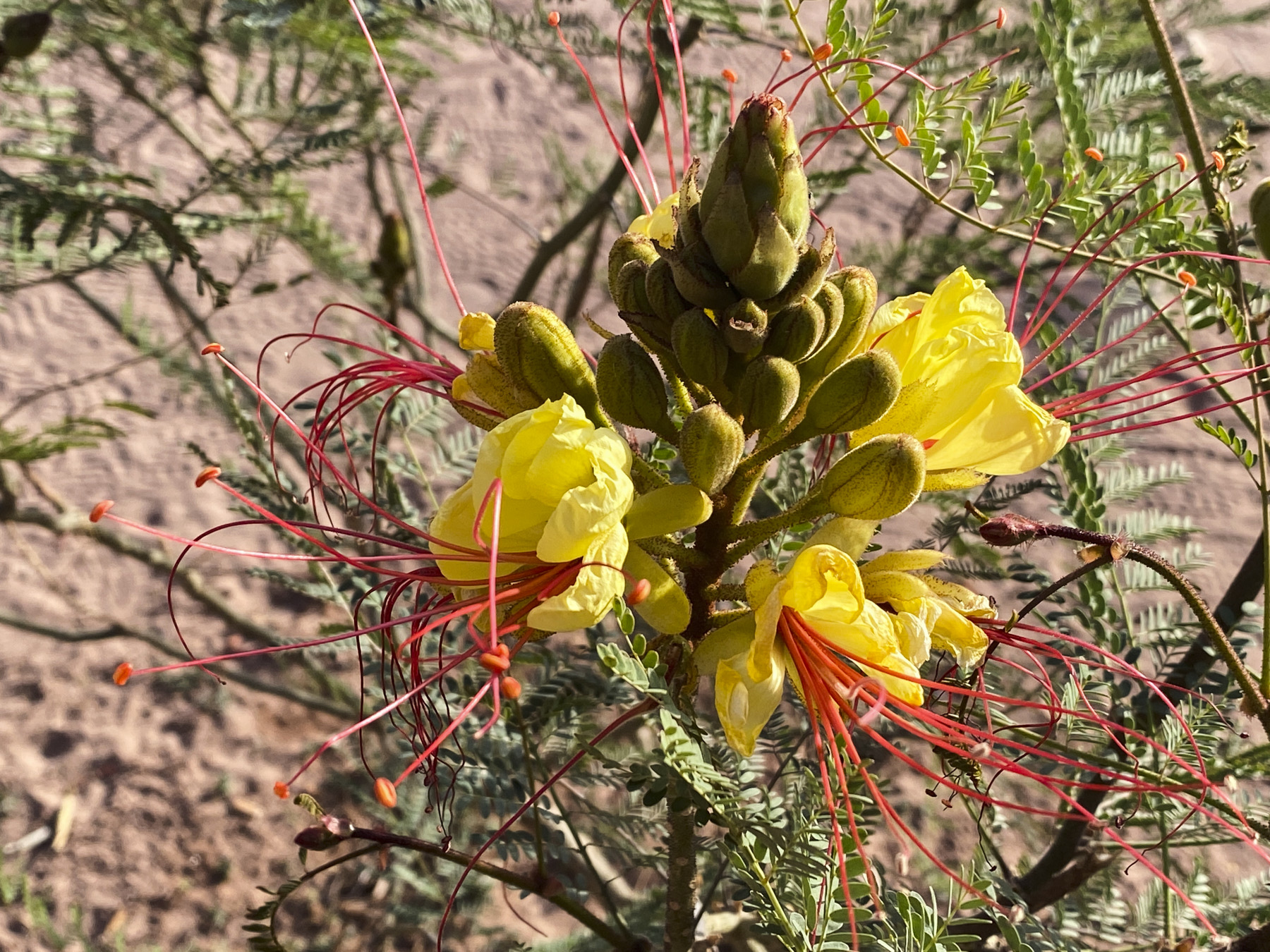
After seeing Petra, we wandered back up the long trail to the visitors center, glad that the spring weather was comfortable. From there, we headed to the nearby town of Wadi Musa, where we stayed the night. Note the public address speakers on the tower, used to call Muslims to prayer.
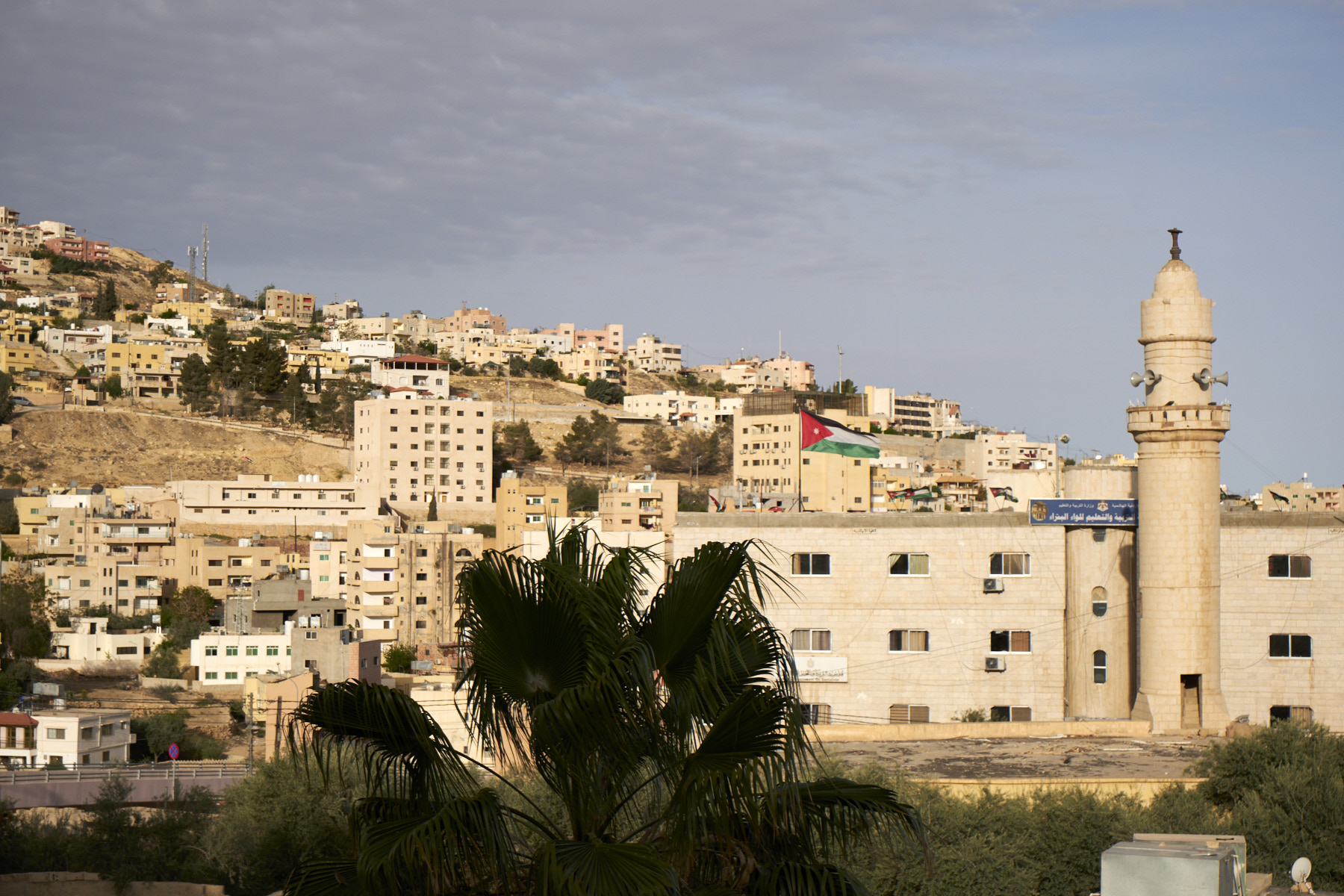
The next day we headed to Wadi Rum, a desert area seen in the movie Lawrence of Arabia, as well as being used as the backdrop for any number of martian movies such as The Martian, as well as Star Wars and Dune. When we arrived, we transferred to the back of open four wheel drive pickups, and headed off through the desert.
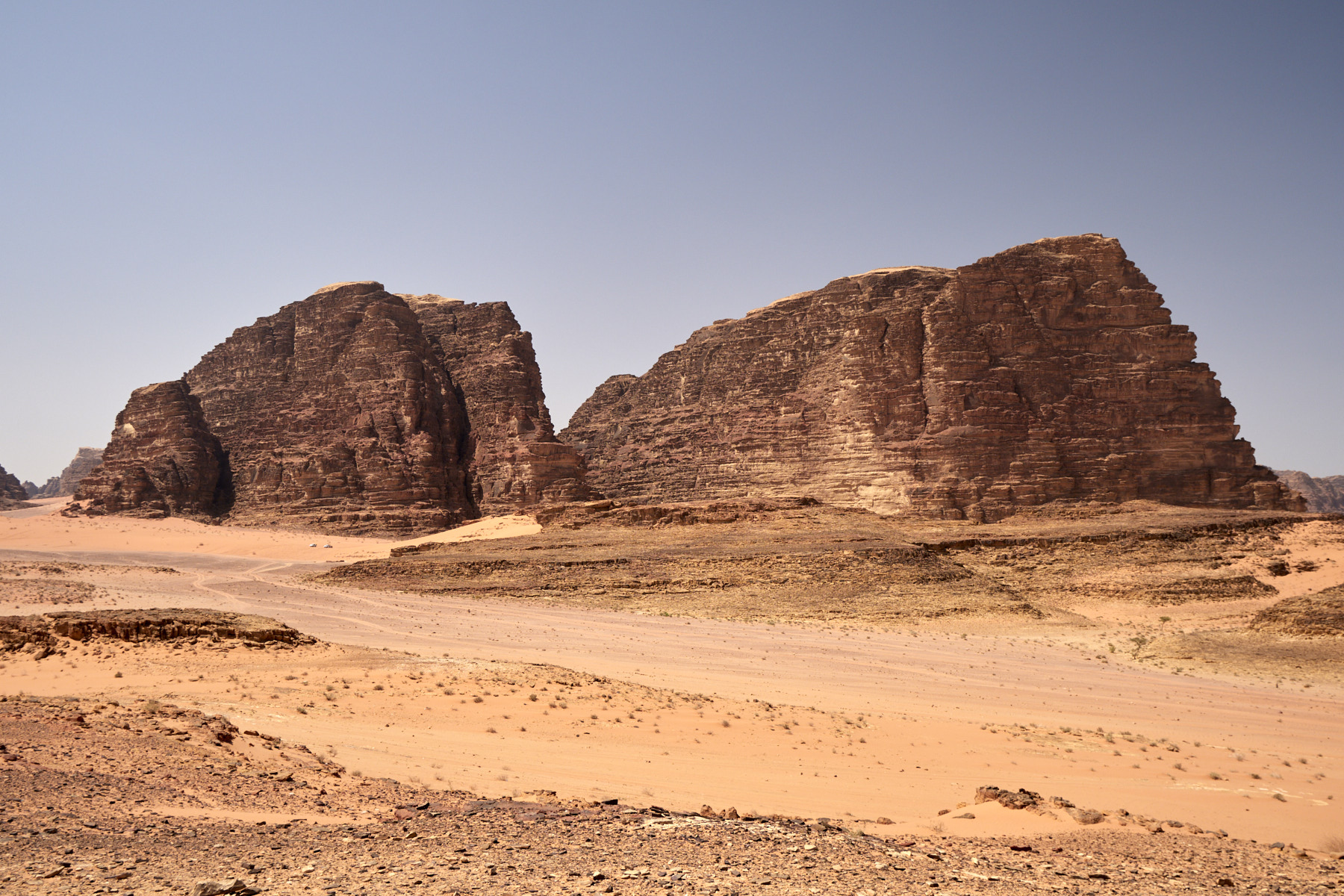
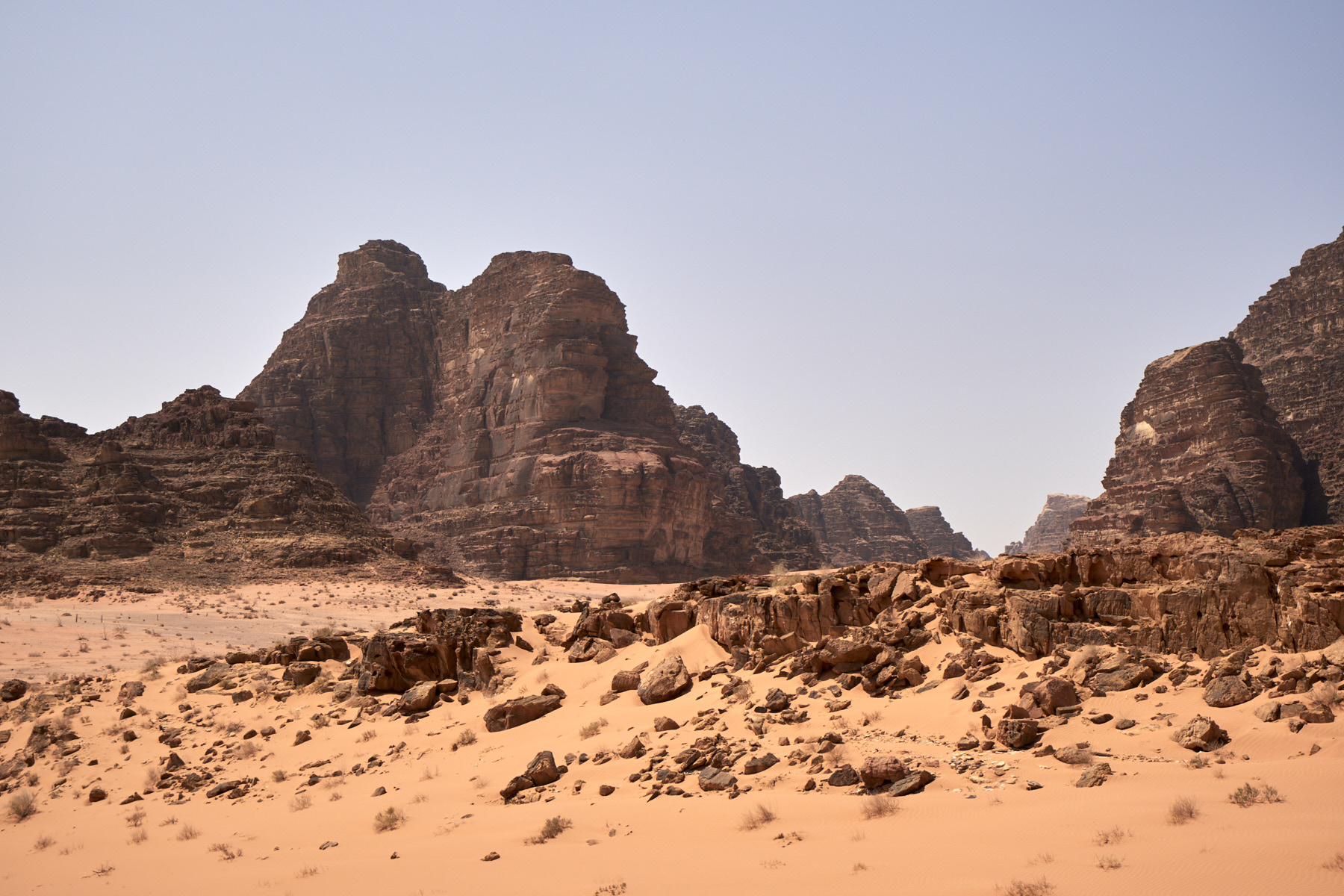
After wandering and hiking through the desert for a while, we arrived at a camp of the Zalabieh tribe, one of the Bedouin people.
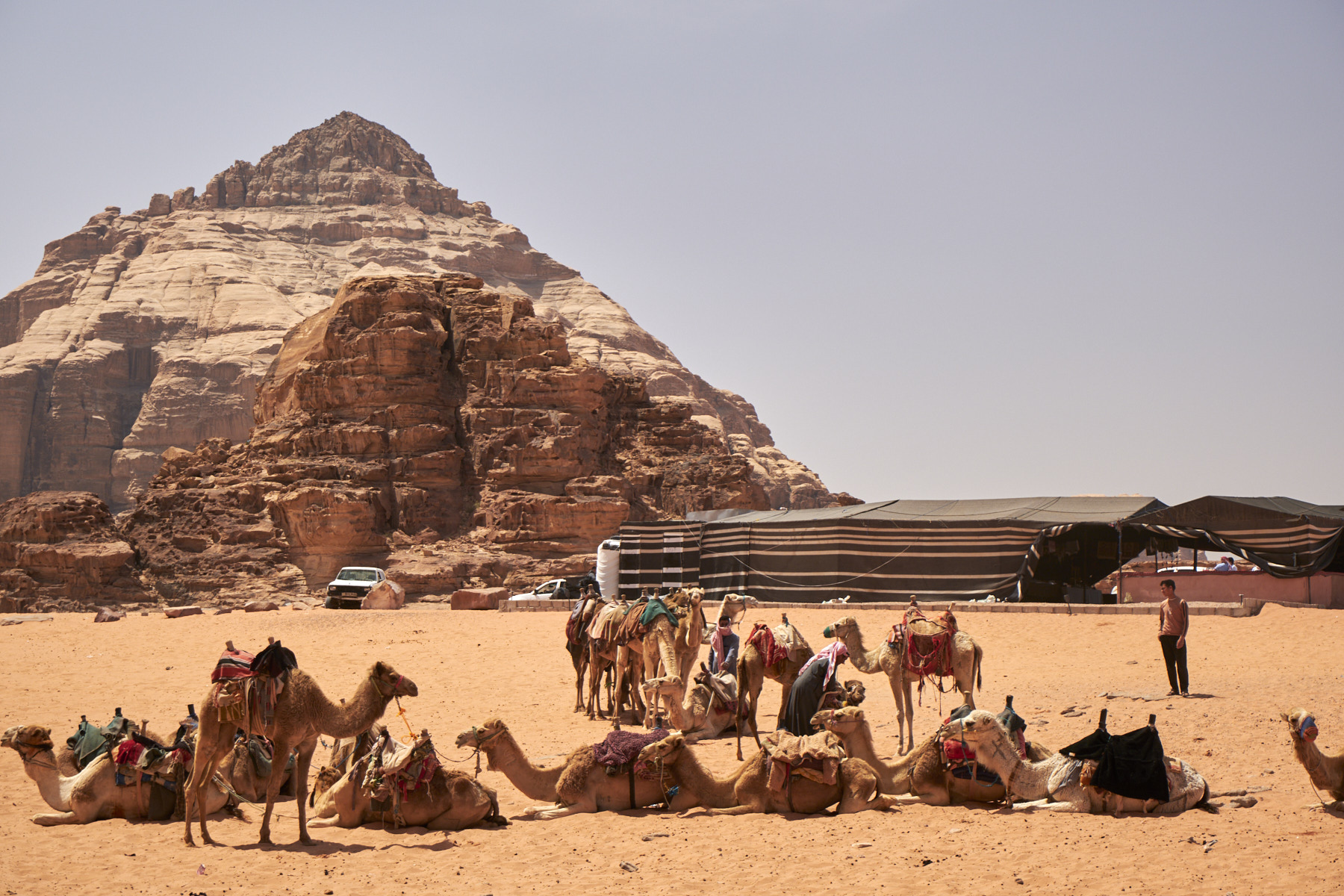
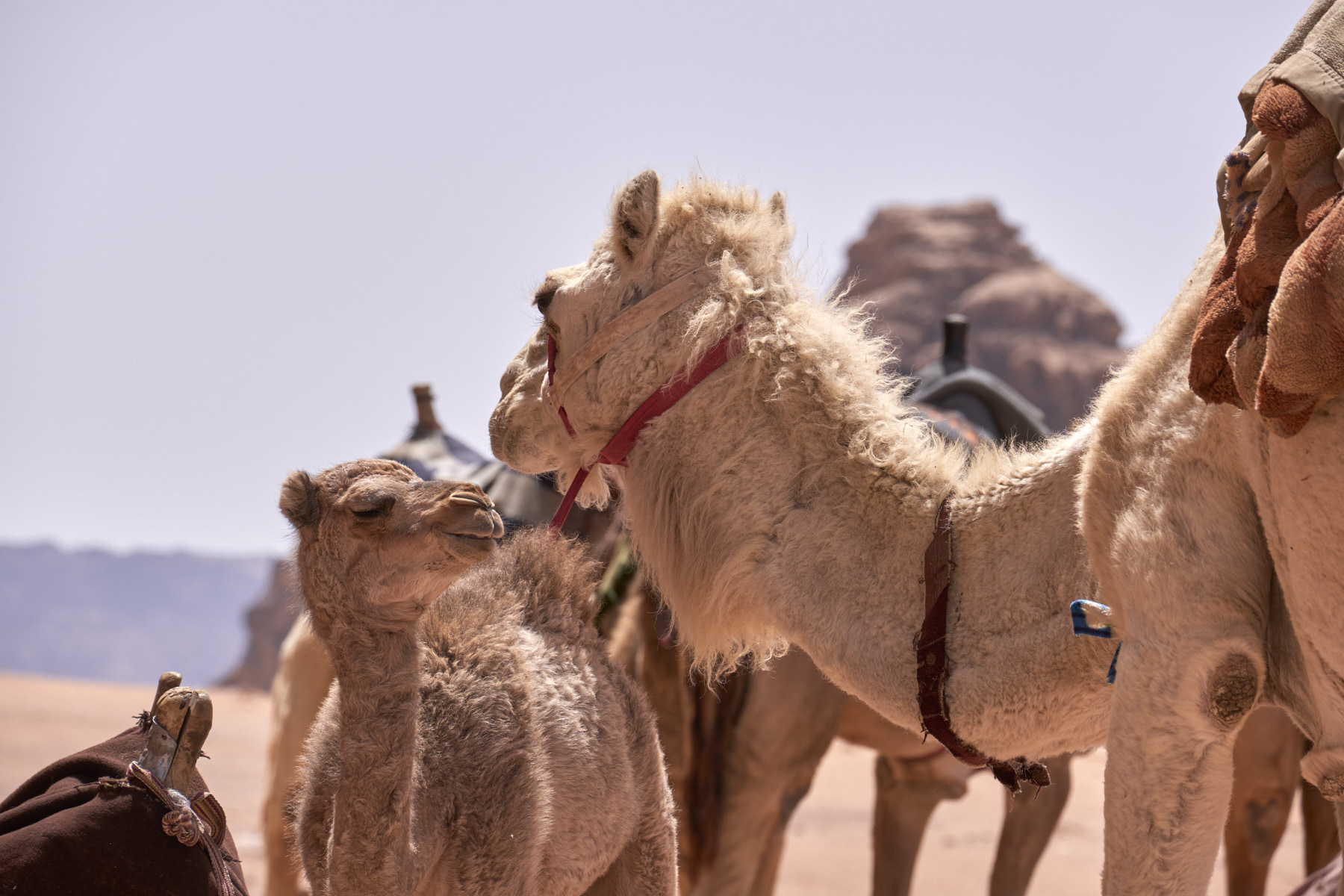
On one of the nearby cliffs were ancient hieroglyphs.
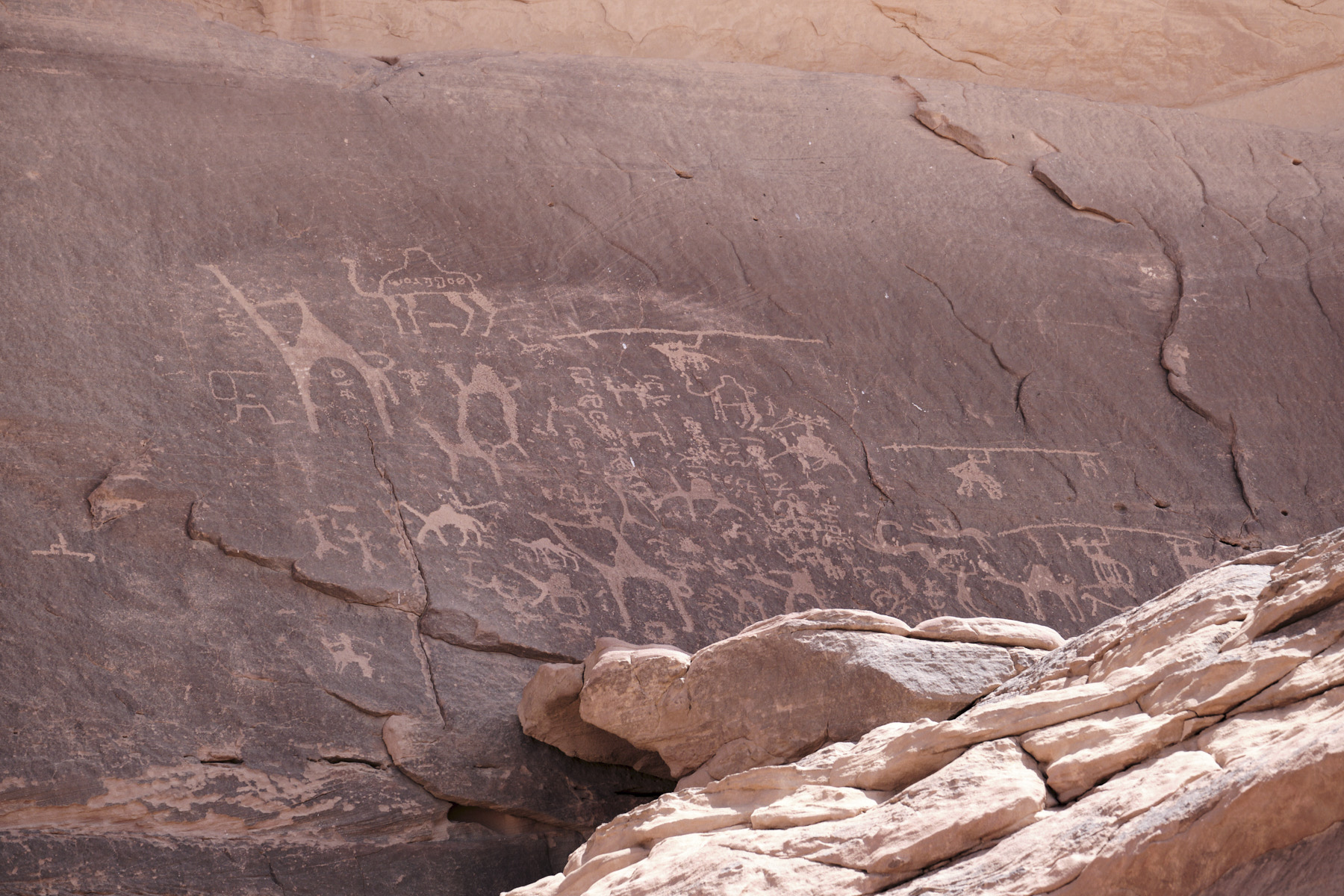
After looking around outside, we were invited into the main tent for tea.
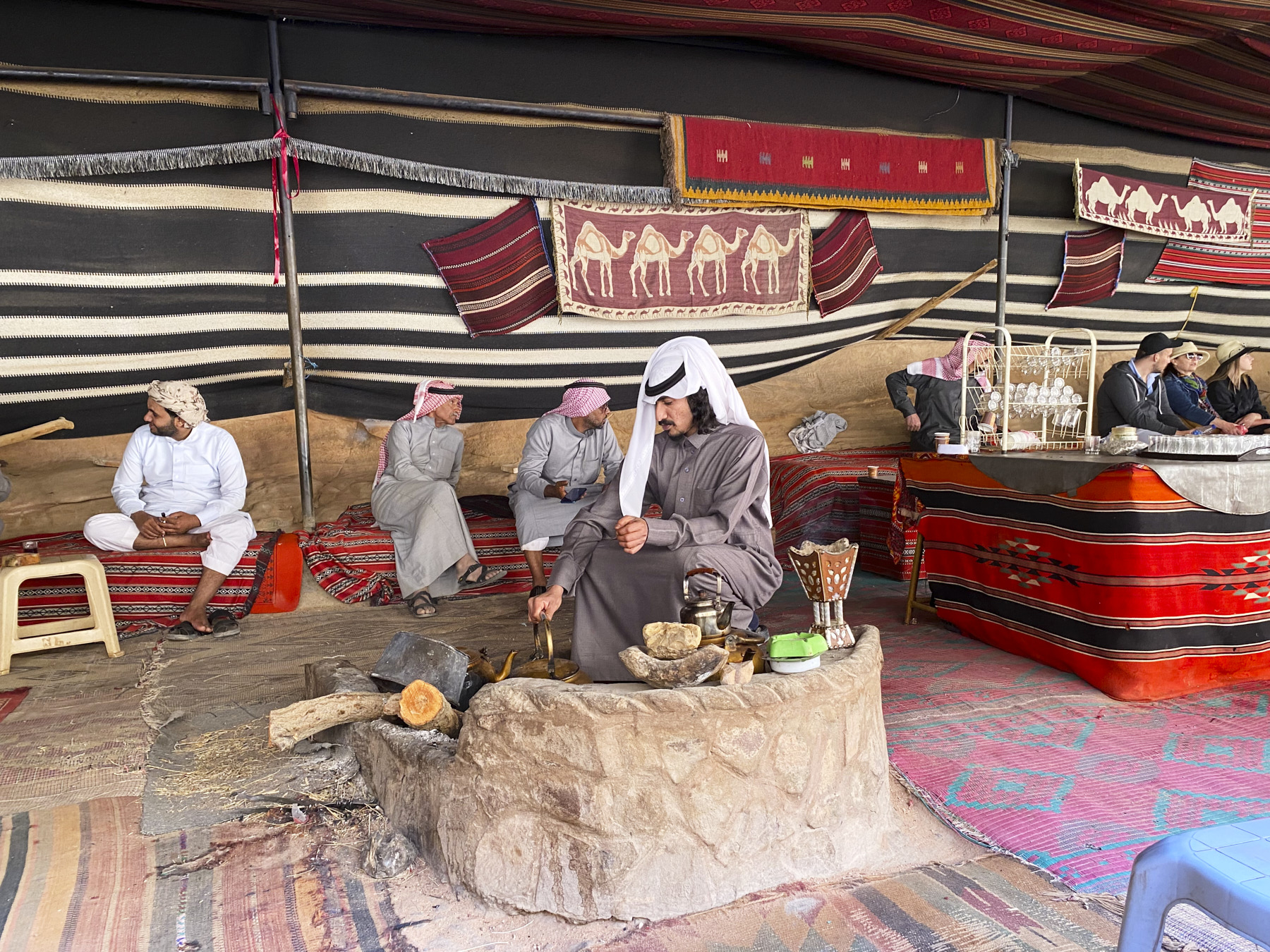
After some time drinking our tea and chatting with our hosts, we hopped back on our four wheel drive vehicles to continue back across the desert. After arriving back at our tour van, we continued on to Madaba, where we stopped at the church of Saint George. Inside the church is a floor mosaic map of the middle east, the earliest mosaic map known.
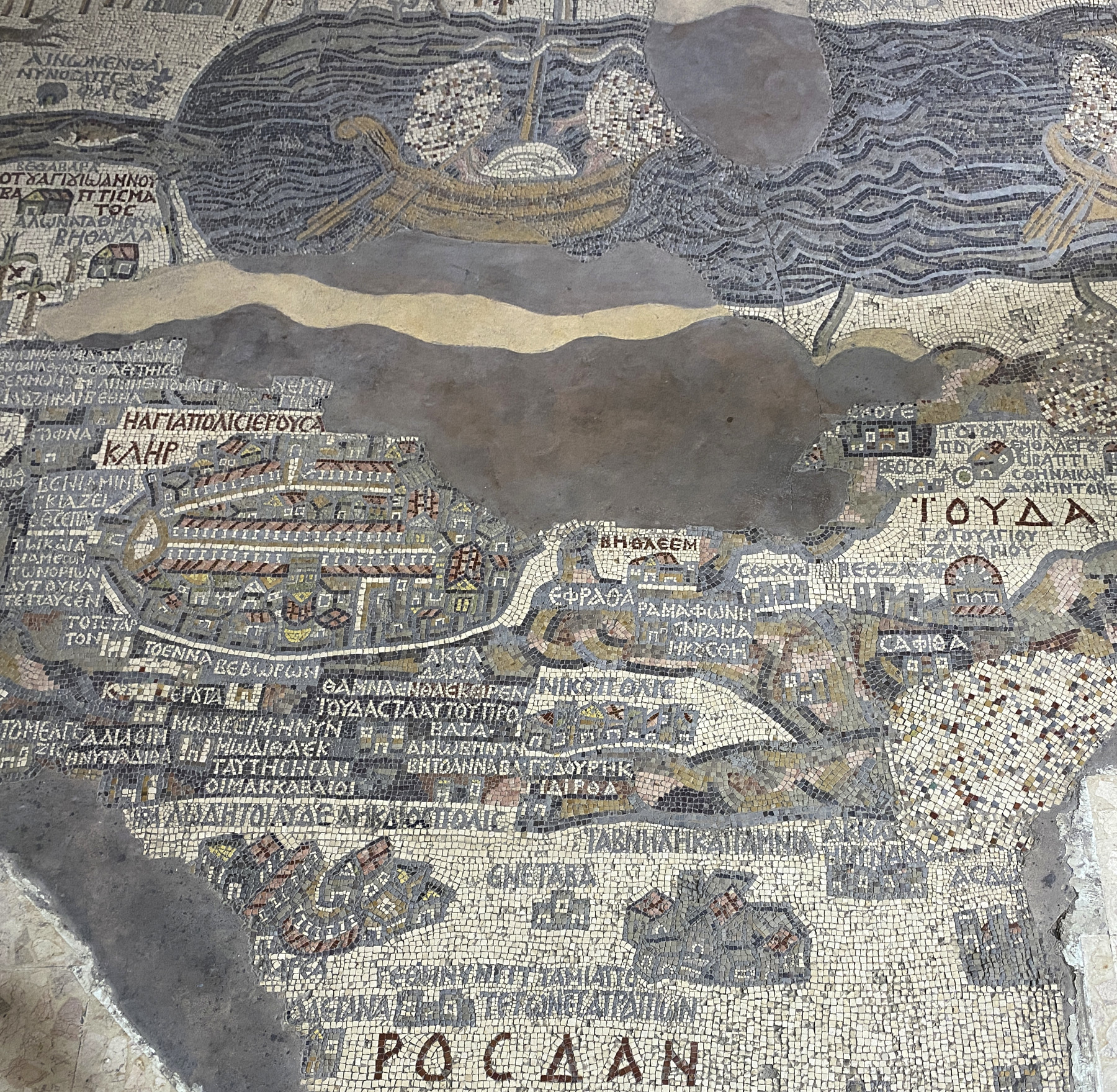
The mosaic map depicts an area from Lebanon in the north to the Nile Delta in the south, and from the Mediterranean Sea in the west to the Eastern Desert. The two boats above are in the Dead Sea, with Jerusalem and the city walls below and to the left. (The greenish oval section) The Mediterranean is shown, but is out of the picture bottom. The Jerusalem section shows a number of the churches and city gates. It shows a church that was built in 542 AD, but is missing any features built after 570 AD, so we know the date of mosaic was within this time. The area shown in the above photo is about 1/6 of the original mosaic, but more than half the mosaic is damaged and missing.
After spending some time at the church, we started the path back home. On the route we stopped to look at one of the original narrow gauge railways in the country.
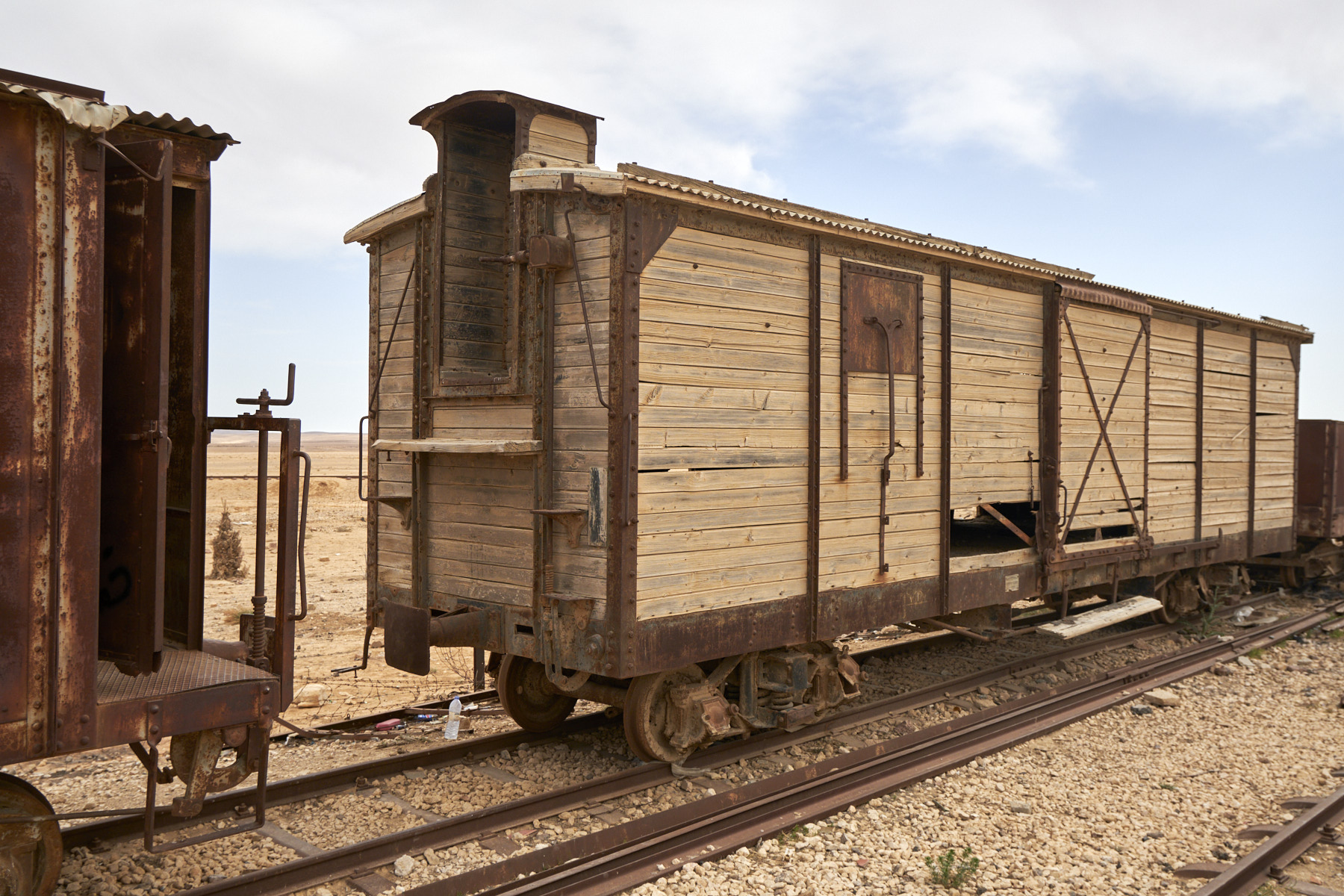
View of a camel from the roadway.
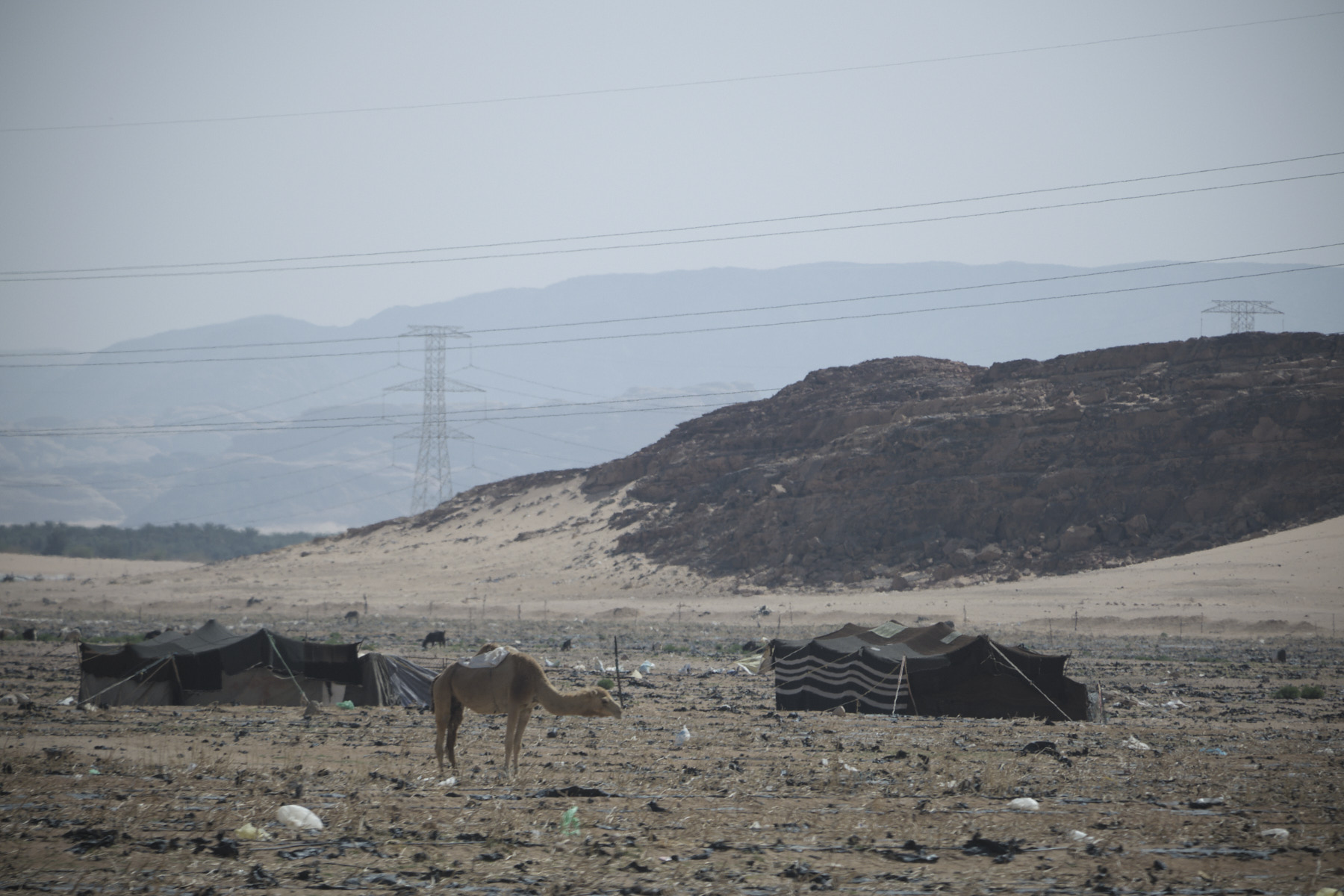
After arriving back in Amman, we stayed the night before beginning our final drive back north through Jordan, across the border, and back down to Jerusalem. A fun filled and busy four days.
Next- on to Spain
Tim & Deb

